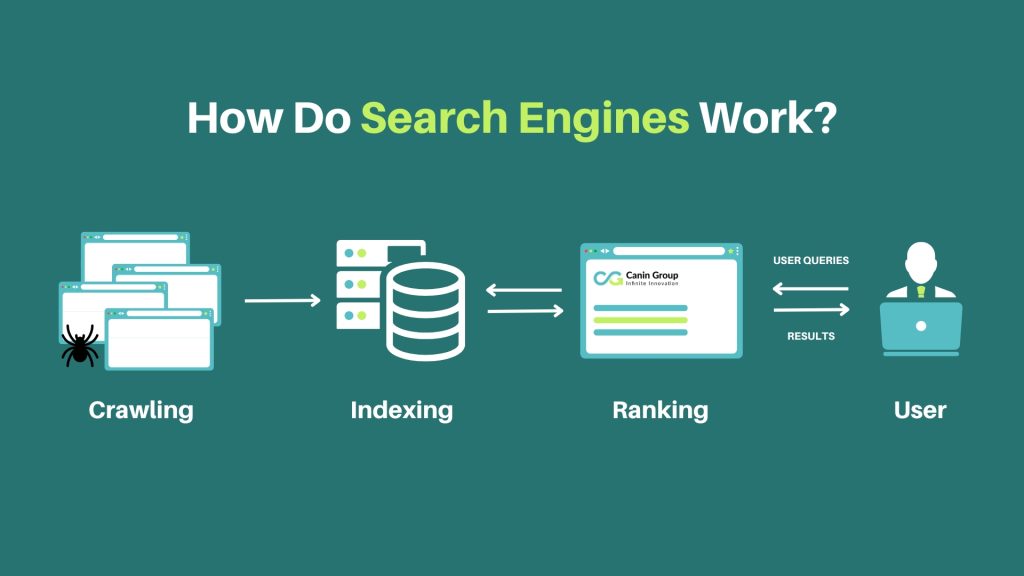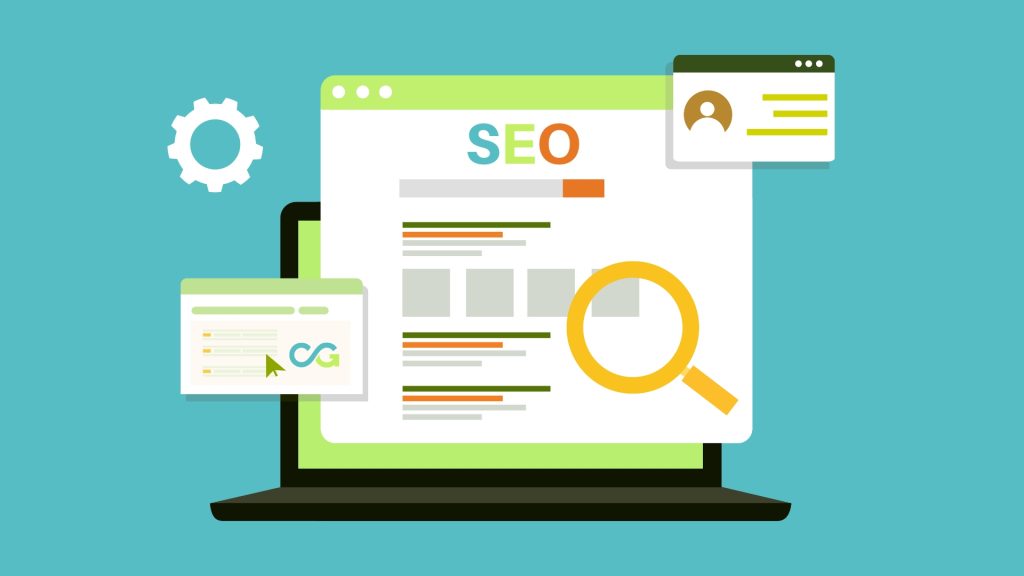Have you ever wondered how your favorite website pops up when you type something into Google? What makes certain pages show up first while others are buried deep in the abyss of search results? The answer lies in three essential processes: crawling, indexing, and ranking. If you’re a business looking to get discovered online, understanding these processes isn’t optional, it’s critical.
In this blog, we’ll break down how search engines like Google, Bing, and others operate, explain why these steps matter for your business, and share practical tips to optimize your website so it ranks higher on the Search Engine Results Page (SERP).
Why Does It Matter?
Imagine having a stunning website with valuable content but no one sees it because search engines can’t find it. Without proper SEO optimization, your website is like a needle in a haystack, invisible to potential customers. The goal is to ensure your site is visible, well-organized, and considered relevant by search engines, so it gets ranked higher and draws in traffic.
Not All Search Engines Are Equal
While there are several search engines, Google dominates the market, accounting for over 90% of web searches (including Google Images, Maps, and YouTube). For this reason, most SEO efforts prioritize optimizing for Google.
How Do Search Engines Work?

Search engines perform three primary functions:
- Crawling – Scouring the web for content, examining each URL’s code and content.
- Indexing – Storing and organizing the discovered content for later retrieval.
- Ranking – Displaying the most relevant content in order of importance for a search query.
1. Crawling: The Discovery Phase
Think of crawling as the scouting mission of the internet. Search engines use bots, also called “spiders” or “crawlers,” to scan the web. These bots travel from one page to another by following links, gathering information about the content and structure of each page they visit.
But here’s the catch: not all pages get crawled. Search engines have limited resources and prioritize sites that are well-structured and easy to navigate. If your website isn’t crawl-friendly, it’s like putting up a “Do Not Enter” sign for search engines.
How to Optimize for Crawling:
- Ensure All Pages Are Accessible: Use a clear site structure and create an XML sitemap to guide crawlers to your important pages.
- Fix Broken Links: Dead links stop crawlers in their tracks, so regularly audit your website for broken links.
- Use Robots.txt Wisely: This file tells search engines which pages to crawl and which to skip. Be careful not to block important pages accidentally.
- Speed Matters: Slow-loading websites may not be fully crawled, so prioritize fast load times.
Common Barriers to Crawling
- Hidden Content – Pages behind login forms.
- Search Forms – Crawlers can’t interact with search bars.
- Embedded Text – Text in images or videos is unreadable to bots.
- Poor Navigation – Broken links or unlinked pages.
Solutions:
- Use HTML for important content.
- Submit an XML sitemap to search engines.
- Monitor Google Search Console for crawl errors like 404s or server issues.
2. Indexing: The Filing Phase
Once a search engine crawler finds your page, the next step is indexing, where your page’s content is stored and organized in a massive database. Think of this as a digital filing system. If your page isn’t indexed, it can’t appear on search results, no matter how relevant it is.
During indexing, search engines analyze your page content, including the text, images, videos, and metadata, to understand what your page is about. This step determines whether your page is eligible to show up in response to a search query.
How to Optimize for Indexing:
- Write Clear, Relevant Content: Use targeted keywords throughout your content to help search engines understand what your page is about.
- Optimize Meta Tags: Titles, descriptions, and alt tags for images are essential for search engines to index your page accurately.
- Use Structured Data: Schema markup helps search engines understand your content better and may even earn you rich snippets in the SERPs.
- Avoid Duplicate Content: Duplicate pages confuse search engines and may lead to penalties, so ensure each page is unique.
Factors Affecting Indexing
For a page to rank, it must first be indexed. Issues affecting indexing include:
- Blocked Pages – Use of noindex tags.
- Duplicate Content – Specify a canonical version with tags.
- Low-Quality Content – Thin or irrelevant pages may be excluded.
Check Indexing Status:
Use Google Search Console’s URL Inspection tool to verify indexing and request manual indexing for unindexed pages.
3. Ranking: The Competition Phase
Now comes the exciting part: ranking. This is where search engines decide which content is most relevant to a user’s query and display it in order of priority. Pages that are better optimized, more user-friendly, and considered authoritative will rank higher.
Search engines use complex algorithms to evaluate a variety of factors, such as:
- The relevance of your content to the search query.
- The quality of your website (speed, mobile-friendliness, and security).
- Backlinks and external signals that vouch for your site’s authority.
How to Optimize for Ranking:
- Target the Right Keywords: Conduct keyword research to find terms your audience is searching for, and strategically use them in your headings, subheadings, and body text.
- Focus on User Experience: A clean design, easy navigation, and fast-loading pages improve engagement metrics, which are key ranking factors.
- Build Backlinks: High-quality backlinks from authoritative sites boost your site’s credibility and rankings.
- Stay Mobile-Friendly: With most users browsing on mobile, a responsive design is non-negotiable.
- Update Content Regularly: Fresh, updated content signals relevance and keeps users coming back.
How Ranking Works
Ranking determines the order of search results based on factors such as:
- Links – Backlinks from authoritative sites.
- Content Quality – Relevant, high-quality content.
- User Engagement – Metrics like clicks, time on page, and bounce rates.
- AI Systems – Google’s RankBrain analyzes user behavior to refine results.

Earn Bonus Points with Engagement
Can Search Engines Find Your Pages?
If your site isn’t appearing in search results, several factors could be at play:
- New Website – Your site hasn’t been crawled yet.
- No Backlinks – No external links point to your site.
- Navigation Issues – Poor structure prevents crawlers from accessing content.
- Crawl Blocks – Robots.txt or noindex tags restrict access.
- Penalties – Spammy practices may have led to deindexing.
Check Indexed Pages:
- Use site:yourdomain.com in Google search to see indexed pages.
- For detailed insights, leverage Google Search Console’s Index Coverage Report.
Optimizing for SERP Features
Search engines now offer more than simple lists. Features like Featured Snippets, Knowledge Panels, and Local Packs can drive visibility. To optimize:
- Structure your content clearly.
- Provide concise answers to common questions.
Local SEO
For businesses with physical locations, tools like Google My Business (GMB) are vital. Key factors for local rankings include:
- Relevance – Match to the search query.
- Distance – Proximity to the searcher.
- Prominence – Reviews, authority, and citations.
Bringing It All Together
Crawling, indexing, and ranking are the foundation of how search engines work, and each stage requires careful optimization to ensure your website is not only found but also ranks high enough to make an impact.
Golden rule
If search engines can’t Crawl your site, they can’t index it.
If they can’t Index it, they can’t rank it.
And if you’re not Ranked, you’re not getting traffic.
At Canin Group, we understand that SEO isn’t just about ticking boxes. Whether it’s optimizing your site structure for crawling, fine-tuning your content for indexing, or building a keyword-driven approach to ranking, we’re here to help your business stand out. Let’s turn your website into a search engine magnet.





